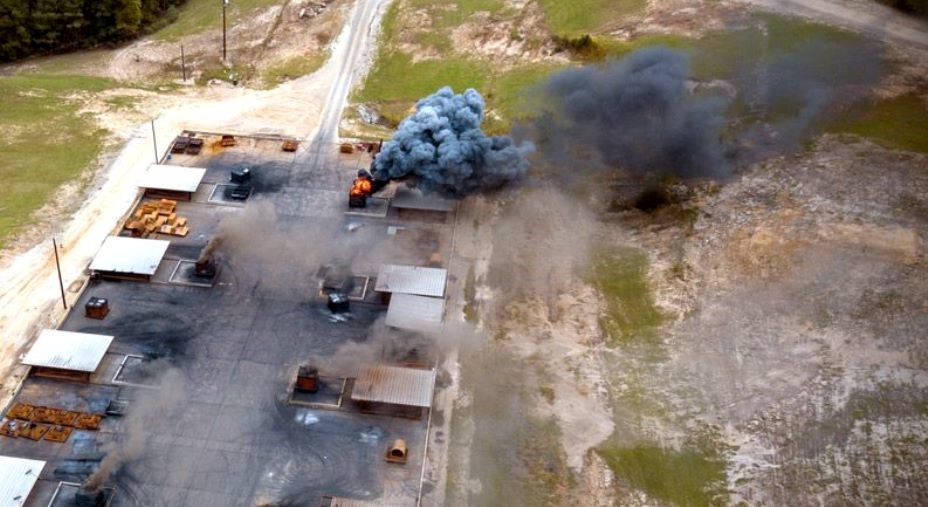
In this national news report by InsideEPA, CSWAB comments on the deeply entrenched resistance by DOD, DOE, NASA and private industry to modernize their hazardous waste treatment systems.
EPA has quietly published a compendium of alternatives to open burning/open detonation (OB/OD) technologies for addressing spent munitions and other explosives even as it delays release of a proposed Resource Conservation and Recovery Act (RCRA) rule that is expected to bar its use in some cases while generally encouraging alternatives.
EPA posted the compendium to its website last month though the document is dated Sept 12.
“This compendium documents when and, in most cases, where alternative technologies have been identified and implemented by facilities. It serves as a supplemental guide both for facilities initiating an alternative technology evaluation and for permit agencies reviewing an alternative technology evaluation,” the document says.
“The primary purpose is to allow for comparison of waste streams being evaluated to the waste streams that may be or have been treated in the listed technologies and thereby, inform decisions and promote dialogue between facilities and permit agencies,” it adds.
EPA’s issuance of the compendium is winning praise from environmentalists, who have been pushing the agency for years to allow alternatives to OB/OD. “I think it will be especially useful to regulators and communities as it is searchable by the specific munition type and configuration but only when facilities are required to fully disclose the types of energetic wastes being treated — which is often not the case,” Laura Olah, executive director of Wisconsin-based Citizens for Safe Water Around Badger (CSWAB), said in an email, though she noted she had not yet seen the document.
“I think the compendium underscores both the viability and availability of alternatives to open burning and open detonation and the deeply entrenched resistance by [the Defense Department (DOD)], [Department of Energy (DOE)], NASA and private industry to modernize their hazardous waste treatment systems,” Olah wrote.
EPA’s publication of the compendium marks the latest step in a long-running battle over OB/OD, which the agency in 1980 generally exempted from its RCRA rule barring open burning of hazardous waste. At the time, the agency said waste explosives could not be safely disposed of through other means.
But in 2019, EPA signaled plans to narrow the exemption after a push by community groups for restrictions as well as 2019 reports from the agency itself and the National Academy of Sciences (NAS) noting a “wide range” of available alternatives that satisfy the safety mandates that were the main driver for using OB/OD.
EPA’s waste office in 2022 outlined a preliminary draft of the upcoming rule, with plans to specifically bar OB/OD of energetic wastes containing certain per- and polyfluoroalkyl substances (PFAS) and other substances.
Despite ongoing opposition from community advocates, EPA signaled at that time that it is continuing plans to allow exceptions for use of OB/OD of some hazardous waste explosives.
Such an exception appears necessary as DOD expects an increased need to dispose of waste munitions using OB/OD due to ramped-up weapons production for Ukraine.
Stalled EPA Rulemaking
While EPA last May submitted a proposed rule to the Office of Management and Budget for review, the proposal has not advanced, prompting environmentalists to threaten to sue the agency for violating RCRA.
But EPA officials late last year said they needed more time to craft revisions.
Evaluating safer alternative technologies to OB/OD, and any rule limiting the practice, “will not happen overnight,” one official said, adding that it “will take time to . . . fund, permit, and construct alternatives.”
According to the agency’s unified agenda, it is aiming to have a final rule completed by September 2024, though that is based on its earlier missed goal of issuing a proposal in November 2023.
But the agency says it is planning to soon issue the proposed rule. In a statement to Inside EPA, the agency said that its recently issued compendium, coupled with “EPA’s soon to be published proposed rulemaking, ‘Revisions to Standards for the Open Burning/Open Detonation of Waste Explosives,’ seeks to improve implementation of the existing regulatory requirement for evaluating and implementing alternative treatment technologies in lieu of OB/OD.”
The “proposed rulemaking is underway to improve implementation of alternative technologies by specifying how and when owners and operators and permitting authorities are to evaluate alternative treatment technologies for OB/OD, including specific information that would be required for facilities to demonstrate whether safe modes of treatment are available for their explosive waste streams,” the agency added.
EPA added that the compendium does not impact the existing regulations regarding OB/OD. “It is a technical resource guide that may be used by anyone treating or seeking to treat waste explosives, or in reviewing an application for treating waste explosives.”
The existing regulations, EPA said, determine the eligibility for use of OB/OD. “This regulation requires that owners and operators of OB/OD units to demonstrate and periodically redemonstrate that there are no other safe modes of treatment available to treat their waste explosives to be eligible to use OB/OD.”
Report by Sarah Mattalian, Inside EPA Publishers, January 11, 2024.
* Photograph: Open burning/open detonation of hazardous energetic wastes at Clean Harbors in Colfax, Louisiana.
